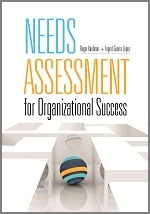ATD Blog
Will L&D Pros Be Masters of Change—or Victims of It?
Thu Sep 24 2015


The L&D field is awash in suggested tools, techniques, frameworks, dogma, and just plain junk. Fortunately, there are also plenty of useful and effective concepts, tools, and guides. Indeed, arguments abound about whether ISD, HPT, talent development, training, e-learning, learning objects, expert systems, balanced score cards, Lean Six Sgima, quality management, or constructivism is the “way to go.” However, support for one approach over another is usually based on personal biases rather than research and pragmatic feedback from sensible application.
Bottom line: Learning and performance practitioners must do the right thing, not just do things right. What’s more, as professionals, we are responsible for what we use, do, produce, and deliver in terms of the value we add or subtract from our internal and external clients.
All of us are charged with improving performance, and we are confronted with change in our pursuit of performance improvement. What’s more, we are responsible for the consequences of the choices we make in these efforts and in reaction to such change.
Too often, though, we look for quick fixes, magic checklists, and comfortable ways to enact change and improve performance. Sadly, we typically look for conventional ways of doing things, rather than seeking out the best tools and concepts to manage the actual realities we must face. Although convenient in the short term, this sort of approach to managing change won’t work in the long term.
Perhaps it is time to make sensible and justifiable—not just conventional and temporarily safe—choices. In other words, will we be the masters of change or the victims of it?
Here are some sensible, sensitive, and effective guidelines—based on applied research and successful practices—for managing change while improving performance.
Think and act strategically, not just tactically and operationally. Correctly align what we use, do, produce, and deliver to measurable external client and societal value added;
Find, define, and justify valid and useful objectives based on performance data, on evidence.
Use and align three levels of planning and results: societal/mega, organizational/macro, and individual/micro.
Collect needs (not wants) assessment data and use that for deciding your choices of where to head, what you do, and what you deliver; needs are gaps in results not lack in means and resources.
Select the right tools, such as Lean Six Sigma, balanced score cards, e-learning, learning objects, for measurably improving performance based on needs assessment data. Don’t start with a solution before you know the problem.
Be rigorous about evaluation and continual improvement to assure that you and your organization adds value within and external to your organization.
All of this is possible … and ethical … and professional … and we know how to do it.

For more advice on improving organizational performance, check out my latest book, Needs Assessment for Organizational Success. Co-authored with Ingrid Guerra-Lopez, this book provides new insight in managing the needs assessment process to structure performance improvement across all aspects of measurement and supportive decision-making tools.
